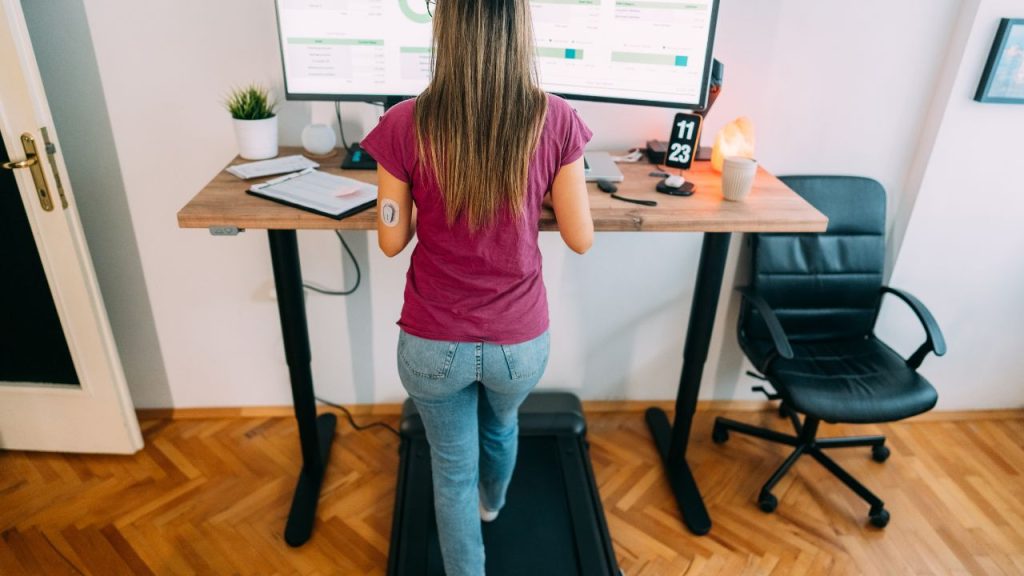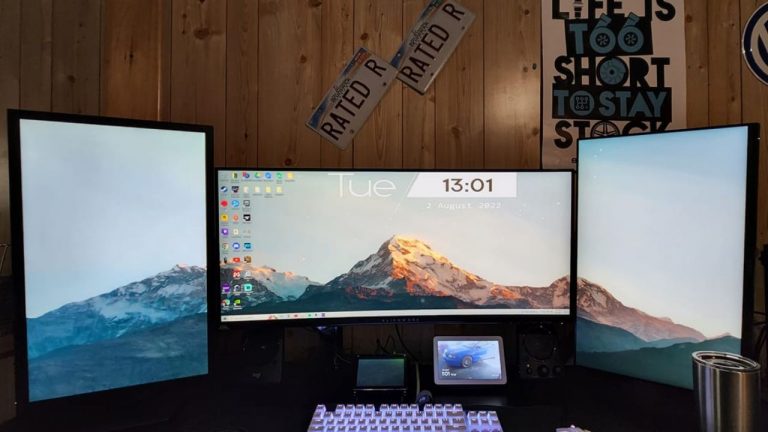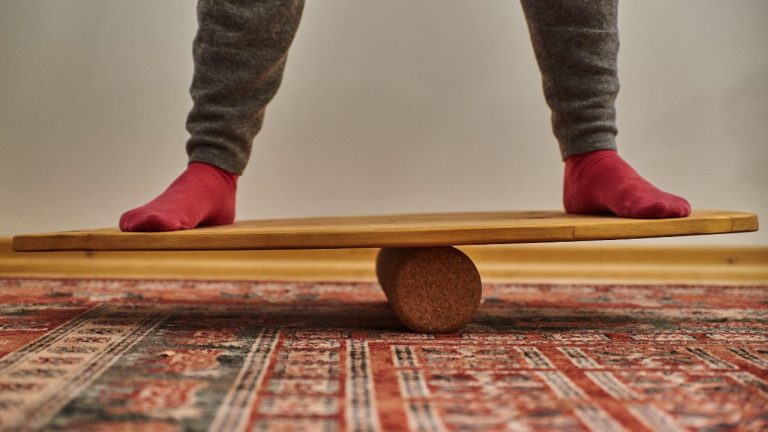Where To Position Your First Standing Desk?
Congrats! You have just bought your first standing desk. But for some people, adjusting the height is more confusing than enjoyable. You might want a straight-cut formula or at least a guide to know what’s the right position for you.
If you are taller than an average person (6’ or above), consider 44”-45” of standing desk height. On the other hand, an average-height person (5’5”) would be more comfortable with 39”-40” of height. If you are short, stick with 36” to 37.5”.
Since it’s your first time, you might not know what the ideal position would feel like. That’s totally alright, cause we have the perfect guideline for you. Keep reading to find out.
Where To Position Your First Standing Desk?
The right position would be different for everybody. There’s no one-size-fits-all rule for standing desks. It highly depends on your height.
If your height is below average, your ideal desk position would be lower than the standard height. It’s common sense, right?
But what’s the average height? For women, 5’2’ to 5’5’ is average. While for men, 5’7’ to 5’10’ is the average height. For now, let’s focus on the height only.
If you are below 5’5”, 36’ to 37.5” would suit you better. And, for the extra tall ones, the desk needs to go above 44’ while standing. So, that’s a clear indication that you have to be careful and notice the desk height range before investing.
It might not be a big deal for users with average height. For example, every ergonomic desk covers 38” to 44” in standing height pretty easily. However, the trouble arises when you have an unusual height. For example, if you are below 5’0”, you might have trouble getting adjusted to the standing desks. As you might know, the majority of the standing desks have a minimum height of 23”. While a person below 5’0’ in height would require 22.5” of sitting height. That’s irony.
The opposite thing happens when you are unusually tall. For example, a 6’8’ tall person would need 49.5” of standing height from the desk to work comfortably. But most desks have a maximum height of 48” in them.
That’s why you must always check the height range and your requirement if your height is not considered average. Other than that, you can follow our chart below to find out which desk position will suit you better both while standing and sitting.
| User Height | Standing Height | Sitting Height |
|---|---|---|
| 5’2” | 37.5” | 23” |
| 5’5” | 39.5” | 24.5” |
| 5’7” | 41” | 25” |
| 5’10” | 43” | 26.5” |
| 6’0” | 44” | 27” |
| 6’5” | 47.5” | 29” |
5 Things To Consider While Positioning Your Standing Desk
Want to be a step ahead? Then, consider these five factors alongside the rather straight-forward chart you have seen above.
1. Elbow Angle
Your elbow angle is the most crucial thing here. Place your hand on the keyboard and act like you are typing something. Now, focus on your elbow. Is it perpendicular to the floor? If yes, the height suits you perfectly.
If not, then keep adjusting the desk height till you find the 90 degrees elbow angle. Desk workers use their front arm for the majority of office work. A wrong position can cause immense pressure on this particular body part. You will end up wondering why you don’t like working at a standing desk.

2. Eye Angle
The rule is to reduce eye movement as much as possible. Otherwise, your eyes might ache or show signs of irritation at the end of the eyes.
First of all, place the monitor or laptop on the desk. Now, stand right in front of it and close your eyes. Wait for a while and then, slowly open your eyes. What do you see as the first thing? Is it the center part of the screen or the edge? To reduce eye pressure, your eyes should naturally land on the center of the screen. That way, the rest of the screen is still within your vision without moving the eyeball.
To achieve this start by following our ideal desk height chart. If the chart says, you should position the desk at 39.5” in height, please do that. Later, change the height a bit depending on your monitor height. If it requires you to look up while working, that position is not ideal. Lower the desk height by 0.5 an inch and measure your eye angle again.
3. Back Posture
The number one reason why we recommend using a standing desk is due to a better posture.
And, what’s exactly a good posture? It refers to a position when the stress imposed on your spine is at a minimum level. It happens when you stand straight. But a wrong desk height either too high or too low will cause a disrupted posture.
That means even if you are using a standing desk, you can’t reap the benefits unless the desk height is correct.
4. Neck Movement
We all move our necks while working. But it shouldn’t happen constantly. For example, when your ideal desk position is 40” and you are suing 43”, guess what happens? You have to tilt your neck up and work. And, that’s not for 5 or 10 minutes. We are talking about hours of work-shift here.
The result is severe neck pain that can go down to your spine and shoulders as well.
5. Wrist Position
Just like your elbow, the wrist position should be taken care of as well. When we type for long hours the keyboard placement needs to be accurate to our height.
But many people don’t understand what we mean by the correct wrist position. Naturally, we are comfortable placing our wrists in a straight line to our elbow. There shouldn’t be a noticeable angle.
But what if the ideal desk height required for a straight posture doesn’t allow this wrist position? In that case, we recommend, you use a keyboard tray under the desk. That way, you still have some scope of correcting your wrist position.
Why Is It So Important To Position Your Standing Desk Correctly?
Ever wonder why we are putting so much effort into finding the correct desk position? Well, turns out your productivity level, mood after work even overall health depends on this one factor.
1. Productivity Level
Standing desks have been proven to increase productivity by 50%. Because the need to take breaks after every 20 minutes, gets reduced. You can just stand when you get bored and don’t leave the work hanging.
According to a study held by Texas A&M University, workers who used standing desks were 53% more responsive and successful in their tasks. Not just your health, the overall performance has a lot to do with your working posture.
Needless to say, the desk must be adjusted to a person’s height perfectly to achieve this much success rate. Otherwise, you would still feel as fatigued as your seated co-worker.
2. Long-term Spinal Issues
If you spend most of your time slouching over the desk, we have bad news for you. It will cause long-term spinal issues and other severe lower back problems.
That’s why employees are so conscious about using a standing desk. It’s hard to slouch too much while standing straight.

How Long Should You Stand In Front Of A Standing Desk?
You sit in front of a regular desk all day long. So, does it mean you should stand in front of a standing desk the same way? No way. In fact, it’s not healthy for you to stand during the whole 6-8 hours shift. It will do more harm than benefit. For example, you will face leg muscle swelling, lower back pain, and so on.
The ideal way is to stand for 15 to 20 minutes every hour. That should be enough to restore your posture back to straight. After that, enjoy the rest of the 40 to 45 minutes sitting.
What if you want to stand for a little bit longer? You might need a tool like an anti-fatigue mat for that. These mats are famous for increasing your time in front of the desk without causing any muscle fatigue. The mats help to move your legs from time to time standing in the same position and of course without any slouching. The blood flow into your heel eventually increases which erases any trace of a stiff heel.
Before You Go!
Standing desks are nothing new. It’s becoming a staple in every home office we see. But, you might not be reaping all of its benefits properly. For example, do you have a mat under your desk? If not, then check out our article on this topic and see whether you need one or not.


![How Do You Clean A Flexispot Desk? [Maintenance Guide]](https://homethereby.com/wp-content/uploads/2022/09/1-wide-1-vertical-monitor-setup-768x432.jpg)


![Exercise Ball VS Standing Desk [Pros & Cons Explained]](https://homethereby.com/wp-content/uploads/2023/05/Exercise-Ball-VS-Standing-Desk-768x432.jpg)
